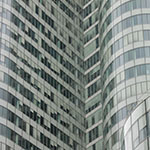Euroacademia Conferences
 Europe Inside-Out: Europe and Europeanness Exposed to Plural Observers (9th Edition) April 24 - 25, 2020
Europe Inside-Out: Europe and Europeanness Exposed to Plural Observers (9th Edition) April 24 - 25, 2020 Identities and Identifications: Politicized Uses of Collective Identities (9th Edition) June 12 - 13, 2020
Identities and Identifications: Politicized Uses of Collective Identities (9th Edition) June 12 - 13, 2020 8th Forum of Critical Studies: Asking Big Questions Again January 24 - 25, 2020
8th Forum of Critical Studies: Asking Big Questions Again January 24 - 25, 2020 Re-Inventing Eastern Europe (7th Edition) December 13 - 14, 2019
Re-Inventing Eastern Europe (7th Edition) December 13 - 14, 2019 The European Union and the Politicization of Europe (8th Edition) October 25 - 26, 2019
The European Union and the Politicization of Europe (8th Edition) October 25 - 26, 2019 Identities and Identifications: Politicized Uses of Collective Identities (8th Edition) June 28 - 29, 2019
Identities and Identifications: Politicized Uses of Collective Identities (8th Edition) June 28 - 29, 2019 The European Union and the Politicization of Europe (7th Edition) January 25 - 26, 2019
The European Union and the Politicization of Europe (7th Edition) January 25 - 26, 2019 7th Forum of Critical Studies: Asking Big Questions Again November 23 - 24, 2018
7th Forum of Critical Studies: Asking Big Questions Again November 23 - 24, 2018 Europe Inside-Out: Europe and Europeanness Exposed to Plural Observers (8th Edition) September 28 - 30, 2018
Europe Inside-Out: Europe and Europeanness Exposed to Plural Observers (8th Edition) September 28 - 30, 2018 Identities and Identifications: Politicized Uses of Collective Identities (7th Edition) June 14 - 15, 2018
Identities and Identifications: Politicized Uses of Collective Identities (7th Edition) June 14 - 15, 2018
The “Bilbao Effect” – Closer Look Behind Transition and Change in an Urban Image and Reality: The Conceptual Base Behind the Turnaround of the Basque Economy and Society
-
-

-
Presentation speakers
- Gerhard Eichweber, Value Group, Switzerland
- Download presentation
Abstract:
The so-called “Miracle of Bilbao” reflects the surprisingly rapid and bold “turnaround” of an economy ailing from profound crisis, and saving threatening social situations from exploding.
The turnaround is the result of far reaching policies of the then recently more autonomous regional administration and their being turned into a “concerted action” orchestrating all measures of economic promotion afforded the region as a so-called ZUR (zone of urgent restructuring) by the European Union, then “European Community”.By topping financial subsidies and promotion of technologies with the creation of a Centre, initially conceived as “Design Centre”, but virtually turned into a centre of Entrepreneurship and Innovation, supporting and increasingly concerting the activities of economic promotion and focusing these prevailingly upon entrepreneur-run companies and their service providers, it was achieved that economic activities so far reduced to “me-too”-offers were decisively “re-invented” and steered to incomparable offers, the uniqueness of which was aimed at the diversity of preferences, and underlined by means of non-verbal communication (Gestalt, Design) of appearance and customer/user-experience leading to identification: Brand Techniques. In the process, it has been made clear to public administrators, that their measures, namely building and infrastructures, too, needed to reflect the concepts proactively presented to the private sector. Buildings, too, should, with similar pride, refer to the future, rather than the past, becoming architectural landmarks of the change in progress, thanks to the reactivated industry.
As an example, for the term “architectural landmarks”, the undersigned spontaneously referred toF. L. Wright’s Guggenheim Museum in New York. Hint which had unexpected effects, in that politicians and public administrators eventually interacted with the Guggenheim foundation.
The paper and its presentation shall underline the economic theory aspects together with an outline of the concepts co-ordinated as a holistic approach to sustainable economic development – plus the narration of “how it all happened” and how easy the same approach can be applied – and improved everywhere by tailoring it to local culture and pride as resource of distinction. -
Related Presentations

Femininity as Performance in Carson McCullers’ 'The Ballad of the Sad Café', 'The Member of the Wedding' and 'The Heart is a Lonely Hunter'
- Ioana Baciu

Purism: Meta-Politicized Concrescence and Critique
- Lorena Morales Aparicio

Performing Disabled Sensorial Extension and Subversion
- Amanda Cachia

Theory and Praxis of Romantic Anti-Capitalism
- Matthias István Köhler














